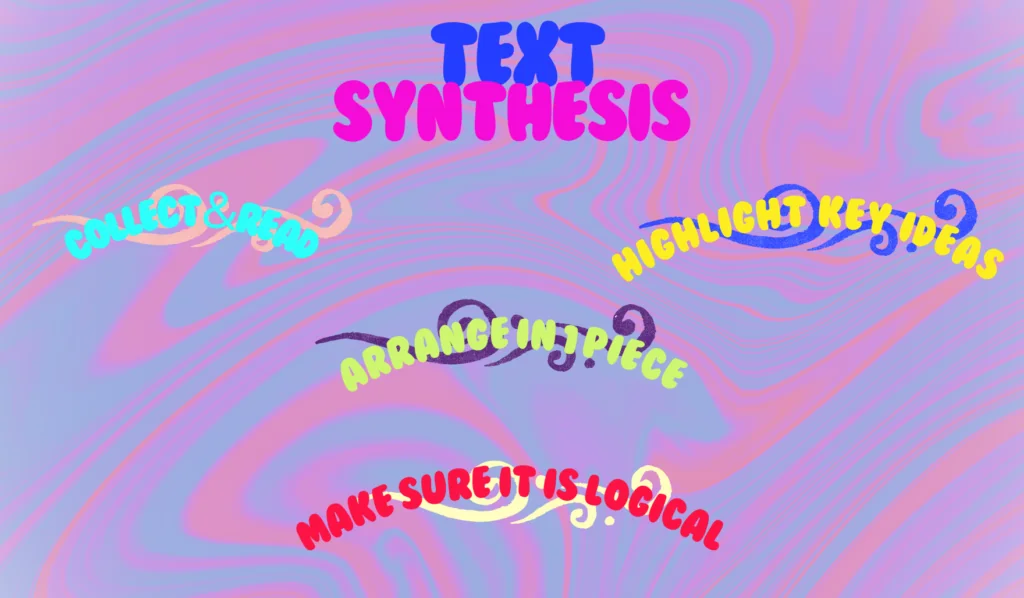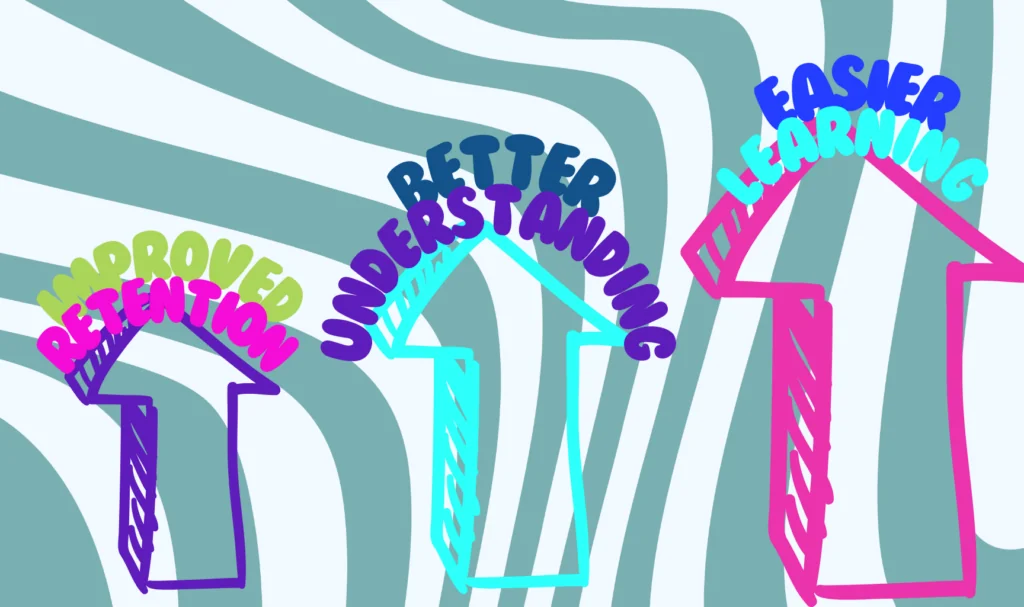You may sometimes hear that the word “synthesis” is used as a synonym for the word “summary”. Even though they may be somewhat interchangeable in the overall daily routine context, in academic writing they have different meanings. The key distinction between synthesis vs summary is that the first one uses key points and ideas from various texts, combining them into one for a definite conclusion, while the summary is a condensed version of the main thoughts presented only in one piece of writing. This is a more simple explanation, so if you want to learn more details about text synthesis and summary, keep on reading.

✅ AI Essay Writer ✅ AI Detector ✅ Plagchecker ✅ Paraphraser
✅ Summarizer ✅ Citation Generator
Text Synthesis – Definition & Characteristics
Synthesis means putting together information from various sources. Suppose you are a chef in a kitchen, surrounded by a variety of ingredients—these are like the various texts, ideas, and pieces of information you find during your research. Just as a chef combines ingredients to create a new, flavorful dish, in text synthesis, you blend these ideas to form a new, coherent understanding or argument.
Imagine you’re working on a paper about environmental policies. You’ve read articles, watched documentaries, and looked at statistical studies. Text synthesis would help you a lot in this case. You take the essence of one argument, as a counterpoint, provide supportive data, and combine them. In the end you will have a conclusion that reveals your deep understanding of the topic, in all its complexity. It might go something like this,
“While renewable energy initiatives are crucial, the economic and social challenges they present cannot be overlooked.”
Here, you’ve created a new perspective that acknowledges multiple sides of the issue. Remember, synthesis requires you to engage critically with each source, understand its place in the larger conversation, and then integrate that with your unique insight. Later, you will find this skill to be essential for being an active participant in any academic or professional discussion.
Sometimes, you need to understand the essence of the article quickly, and in such cases, a new AHelp article summarizer comes to the rescue. This tool will analyze the article for you and return a brief overview in no time.
Types of Synthesis Writing
Synthesis may have various forms, depending on the type of sources you are trying to put together and the main idea that you want to transmit. For this reason, synthesis texts may be broken down into several types.
| Type of Synthesis | What it is used for |
|---|---|
| Review Synthesis | Similar to the literature review, this one is used to combine different articles on one topic just to give a full overview of the subject matter |
| Explanatory Synthesis | Correlating and bringing together the ideas from various texts in a similar field. |
| Argumentative Synthesis | Selecting ideas from various texts to support a particular argument or to present a new viewpoint. |
| Illustration Synthesis | For gathering ideas from different sources to back up your point of view. |
| Concession Synthesis | Similar to the literature review, this one is used to combine different article on one topic just to give a full overview of the subject matter |
| Comparison Synthesis | To draw on contrasting views on a topic, highlighting the major aspects. |
How can You Synthesize a Text?
This may seem like a simple task, no biggie, but in reality, to write a good synthesis you need to have specific skills. The good news is, that you can easily train yourself to put together well-written syntheses. And all you have to do is follow our guide below.

Finding Material
Start by seeking out sources that expose your topic from different angles. Read them thoroughly. As you do, highlight the main ideas—those that truly capture the essence of each text. You can write them down on a separate piece of paper or document. Just don’t forget to include information on where you took these details from.
Arranging Ideas
Now, bring these ideas together, arranging them by theme or argument. Paraphrase and summarize the points in your own words, so that the essence remains intact. Synthesis texts usually don’t include quotes, as they are mostly short and need to showcase just the relevant claims.
Improving Logic
Then, connect these points coherently. What you’re aiming for is a synthesis that doesn’t just echo individual sources but instead presents a narrative as a powerful and persuasive statement. It should also be easy to understand not just for you but for third-party readers too (you can ask your friend/brother/sister to read it to see if it works).
Revisioning & Refining
As you fine-tune your synthesis, maintain a clear focus, making sure your writing is precise and distinctly yours, never forgetting to credit the authors of original sources. You may not be specifically required to add a list of references, but it can help anyone reading your synthesis to track down the ideas you included there.
Summary – Clarifying What It Is
A summary distills the essence of a text into a concise and accessible format. It focuses on extracting and articulating the main points of a document or discussion briefly and clearly, often significantly reducing the length of the original text while maintaining its core message. Unlike a synthesis, which merges multiple texts to form a new, all-inclusive viewpoint, a summary confines itself to the boundaries of a single source.
Here’s how to think about it: if you’re summarizing, your goal is to strip the text down to its bare essentials. The process involves:
- reading the original material closely
- identifying its key sections
- and then rewriting these important elements in your own words.
Effective summarization requires a deep understanding of what constitutes the ‘heart’ of the text, which can be challenging as it demands both subtlety and clarity in communication. It’s a skill widely used across fields such as journalism, academia, and business, where relaying information quickly and effectively is crucial.
In educational settings, you will notice teachers often emphasize the importance of being able to identify and compress key information. This skill helps students like you understand and retain content more efficiently and improve their ability to focus on critical aspects of their studies.
Synthesis vs Summary: Impact on Learning Outcomes in Education
You may think that the skills for synthesizing and summarizing are only good for tests or for completing specific assignments. However, as recent studies show, these studying techniques can generally improve your educational efforts and help you get the most out of your lessons.
Think of the summary as your compass. It allows you to navigate through extensive texts by distilling complex information into its essential points. This technique to raise comprehension levels, as evidenced by research that saw students’ understanding improve by 19% when effective summarizing strategies were actively used. This proves that summarizing can help you learn to identify key information, which sharpens your ability to process and understand intricate material. Synthesis, on the other hand, is about connection and creation. When doing it, you take various pieces of information and combine them to form a logical whole. This process helps you understand different viewpoints within a text as well as fosters a deeper level of thinking. Recognizing and integrating multiple text structures—such as comparisons or arguments—can significantly deepen your comprehension and support the development of analytical skills.

It’s important to note, that both synthesis and summarizing are active learning techniques. And those, even recently, were once again proven to have a great influence on learning and information retention. A study showcasing the use of active learning in a fourth-grade science course found that students exhibited not just higher academic performance but also improved long-term retention of information. This suggests that when you actively engage with the material, using synthesis and summary as part of the learning process, your ability to retain and apply knowledge is strengthened.
Clearly, these skills correlate strongly with not just academic performance and understanding levels but also with the retention of information. As a student, by applying these techniques, you can expect to improve your immediate understanding and achieve a lasting grasp of the subjects you study.
FAQ
Follow us on Reddit for more insights and updates.





Comments (0)
Welcome to A*Help comments!
We’re all about debate and discussion at A*Help.
We value the diverse opinions of users, so you may find points of view that you don’t agree with. And that’s cool. However, there are certain things we’re not OK with: attempts to manipulate our data in any way, for example, or the posting of discriminative, offensive, hateful, or disparaging material.